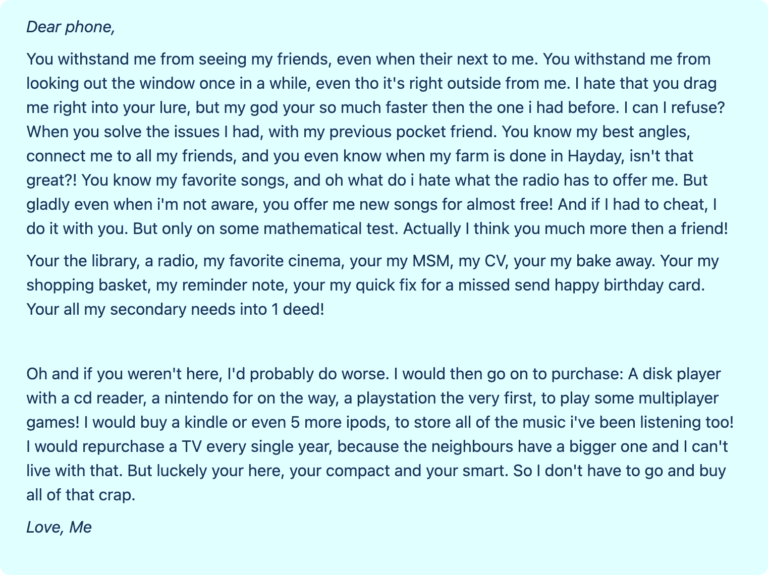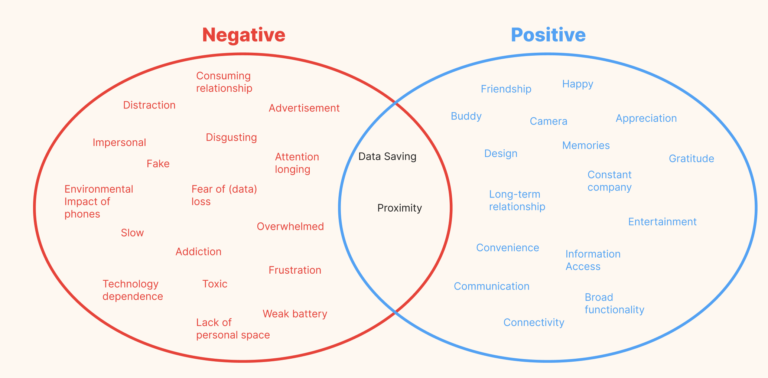“A Feelings Letter to Technology” is an introspective research method that prompts individuals to express their complex relationships with technology through a personalized letter. This approach captures a spectrum of emotions, revealing how devices like smartphones, laptops, and wearables intimately shape our lives. Participants articulate gratitude, frustration, and even nostalgia, offering insights beyond conventional data collection methods. The exercise highlights not just utility but the emotional footprint of technology in daily routines. It serves as a powerful tool to understand the pervasive influence of tech on modern human experience.
This method offers a unique lens into the personal and often complex relationship individuals have with technology. It surfaces our raw, unfiltered emotions and experiences with technology. These insights are crucial for identifying not only the functional but also the emotional strengths and weaknesses of a piece of technology. By understanding these emotional undercurrents, designers and developers can create more engaging, intuitive, and human-centric technologies.
A minimum of two participants is recommended to provide a baseline of emotional feedback. However, to truly unearth the diversity of user relationships with technology, five to ten participants is ideal. This wider array of perspectives can yield a richer set of insights and a more comprehensive understanding of the emotional spectrum. The method is versatile, accommodating various groups such as stakeholders, end-users, and the product design and development teams, each offering valuable viewpoints on the interaction with technology.
This method takes place during the idea and user exploration phase.
This method can take around 30 minutes to implement in person. Sending a survey link online allows for users to complete it in their own time or remotely.
When initiating the method it’s beneficial for facilitators to offer a general overview and perhaps share anonymized example letters to spark creativity, without setting rigid expectations about the contents. Encouragement of honest and unguarded expression is key, allowing participants the freedom to explore their full range of feelings towards their technology, without any preset direction or influence.
Determine the desired number of responses and identify thematic categories you aim to explore through this method. Set up a platform for submission, such as an online survey tool or email, to collect the letters.
Invite participants to compose their “Feelings Letter to Technology,” encouraging them to express any range of emotions or experiences they have with their technological devices. Clarify that they can focus on positive, negative, or mixed feelings, emphasizing the importance of depth.
Instead of directing participants to write specific types of letters (such as love or breakup letters), encourage them to freely articulate their feelings toward their devices in whatever form feels most natural. This could range from expressions of gratitude and dependency to frustration and disappointment.
Collect and review the letters with your research team, focusing on identifying recurring themes, sentiments, and insights. Pay attention to both the variety and depth of emotional connections people have with technology. Organize these findings into categories that can inform design decisions, highlighting key emotional drivers and user needs.
Here on the right, we have an example of a letter from a “Feelings Letter to Your Phone,” where users were prompted to give a candid account of their emotional journey with their personal devices, ranging from gratitude and dependence to frustration and the desire for disconnection.
Secondly, the results from the letter-gathering exercise revealed a dualistic emotional landscape: Phones are cherished for their convenience, connectivity, and the joy of captured memories, yet they are also critiqued for fostering addiction, distraction, and an overwhelming influx of information. These contrasting views highlight the mixed emotions individuals have towards technology, reflecting its role as both a facilitator of cherished connections and a source of constant, sometimes unwelcome, digital engagement.
Seán Aherne, Maryam Javadian Salem, Chantal Deiß, Mahsa Aghaiypour Kolyani

